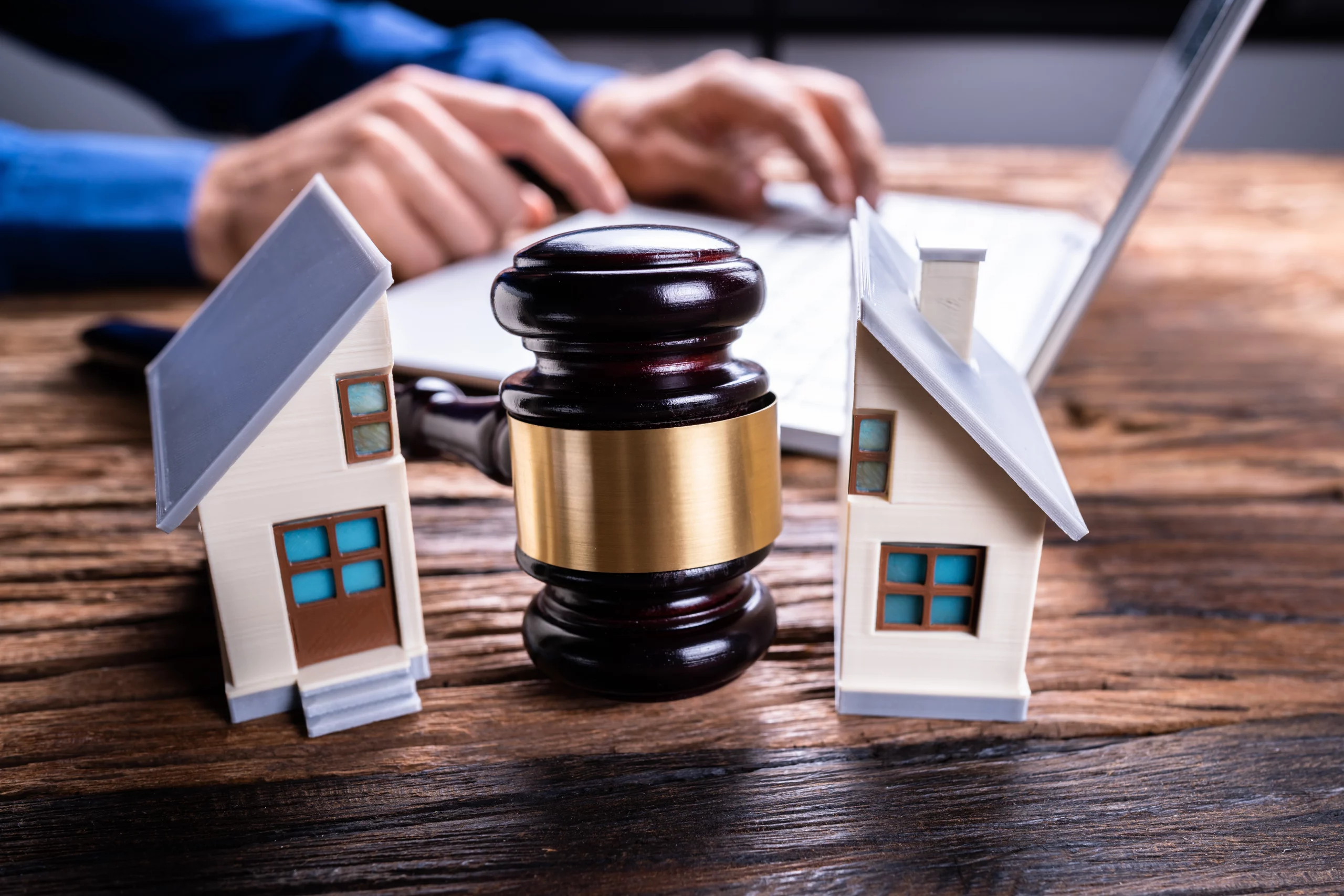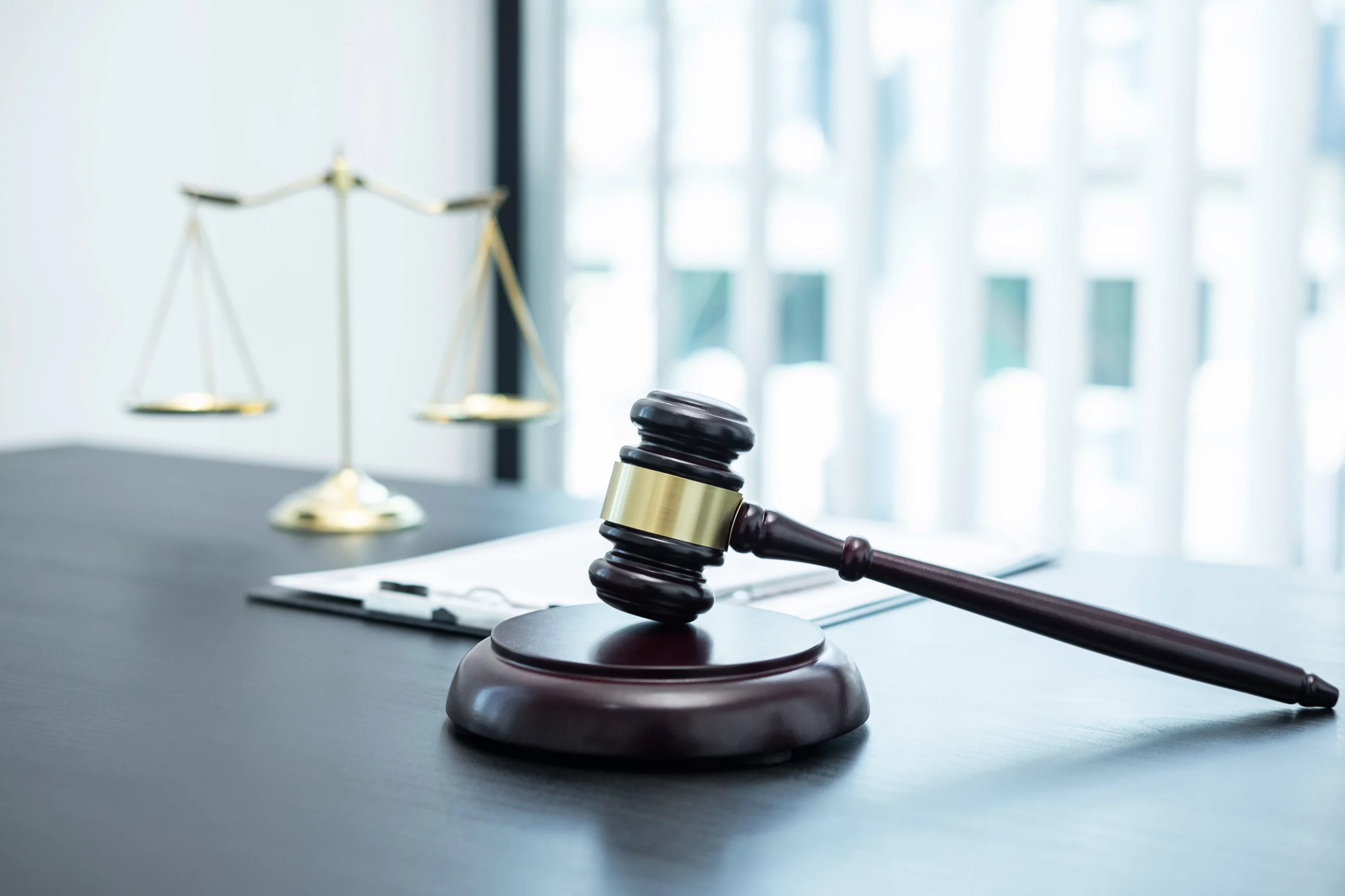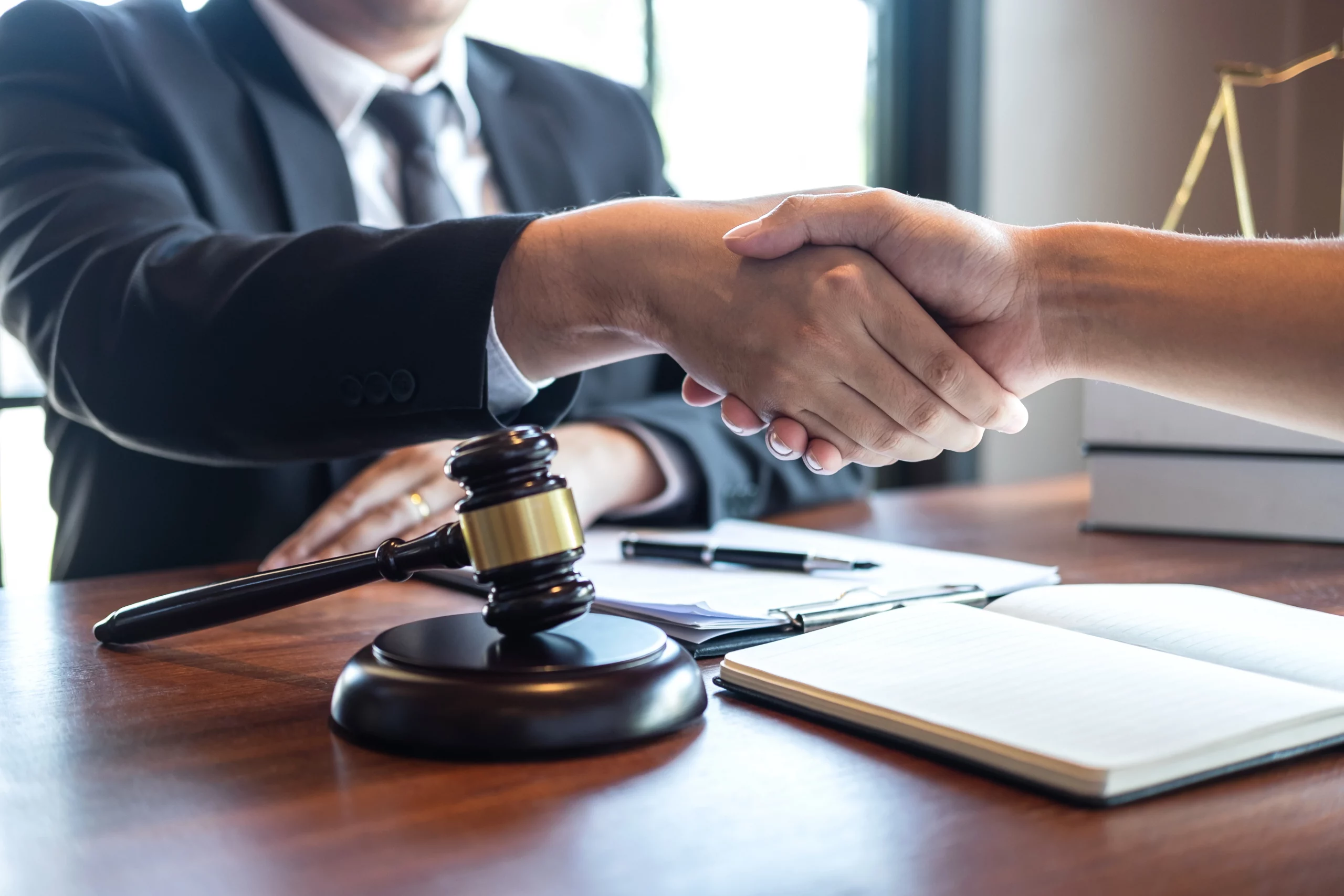Responsible Parties for Your Slip & Fall Accident
Colorado Springs Slip & Fall Law Firm
Premises Liability > Claims > Who is Liable
Customers and tenants of commercial and residential properties have a right to assume that the premises they use are free from hazards that could cause them harm.
Businesses and landlords in Colorado are expected to exercise common sense and follow safety regulations, This means that the owner must fix any hazards on the property that they are aware of or should be aware of and to provide you prompt notice of any latent or disguised faults on the property.
If a landowner in Colorado knows about a hazard on their property, the law states that they must take reasonable measures to fix the problem. Stairs without handrails, broken ramps and other hazards that put people at risk of harm should be addressed immediately.
A property owner has an affirmative duty to remedy a hazardous situation that could reasonably be expected to cause injury to a visitor to the property if the owner is aware of the danger.
To comply with the legislation, property owners must make reasonable efforts to learn of any hazardous situations on their land by conducting inspections at regular intervals. Owners cannot bury their heads in the sand and hope no one notices that there are dangers on their property.
Injury Claims
Free Consultation
NO FEE UNLESS WE WIN
If you slip and fall in a commercial building due to a liquid or other “transitory substance,” you may be eligible for compensation.
It’s important to note that falling on liquid or another “transitory substance” is treated differently under Colorado law than falling due to a dangerous or faulty condition on someone else’s property.
The law has changed drastically over the past decade; unfortunately, it has not improved matters for harmed parties. As the injured Plaintiff, you have the burden of proving that the supermarket, shopping centre, or retail outlet had actual knowledge or “constructive knowledge” of the material that caused your fall.
You can prove the owner had “constructive awareness” of the chemical you slipped on by showing that the owner should have known about the substance because it remained on the floor for a long time or because spills were common in that location.
Knowing what to do if you are ever the victim of a slip and fall is just as important as knowing what you need to show to succeed on a slip and fall claim.
These rules are meant to safeguard your legal interests:
Exercise caution as you attempt to stand up. Many people try to get up fast after tripping and falling because they are ashamed or afraid to sit back down for too long. This can end up hurting them even more.
Do your best to locate and contact any possible eyewitnesses to your fall. If you are with a friend or family member, have them ask others who saw you fall for their names and phone numbers. You’ll need this evidence to back up your claim in court.
To fill out an incident report, you should contact the store’s management and provide a statement. We cannot stress the importance of this move. Remember that the store owner will try to deny responsibility for your fall and injuries if you don’t report them.
Submitting an incident report also prompts the company owner to keep any security footage that may have captured your slip and fall. This potentially decisive evidence may be lost forever if you don’t file an incident report, so don’t wait.
Make a recording of yourself explaining how you fell. Many shoppers who sustain injuries in a store believe they can get a copy of the incident report they fill out after reporting the occurrence to store staff. This is not the case.
The courts in Colorado have ruled that reports like this are “privileged” under the state’s “work product doctrine” because they are “prepared for in anticipation of litigation.” As the store owner is a defendant in your litigation, he or she is not obligated to provide you or your lawyer with a copy of the incident report.
Therefore, you must document what transpired and what you said to the store staff in your own words. The legal process can drag on for a long period, and people’s memories may have faded by that point. Writing down what happened and documenting any injuries will help you in the long run.
Use your camera. In the same vein as requesting to fill out an incident report form, it is crucial to have photographs taken of the surface you landed on, your clothing and any obvious injuries. Ask bystanders to lend you their camera phone if you don’t have one.
Do not assume that you do not need to take your images because the store’s employees are doing so; under Colorado law, the store is not required to provide you with any proof that they have collected.
Never agree to sign a release on the spot in return for cash or a gift card. In the event of a slip and fall, some businesses may provide a gift card in exchange for a signed release, preventing the victim from bringing a claim in the future.
You should take care to avoid being a victim of this. Unfortunately, the effects of certain injuries don’t become apparent for a few days after the incident, leaving your future in doubt. One thing is clear: if you sign a release on the moment, you’ll forever waive your ability to sue the store for damages related to your injuries.
WARRIOR PREMISES LIABILITY ATTORNEYS SHOULD BE CONTACTED.
Consult a lawyer ASAP. For the sake of yourself and your loved ones, you must be familiar with your legal protections if a slip and fall or other harm is sustained on another person’s property. Warrior Premises Liability Lawyers have the experience, manpower, and resources to take on these cases. If you want additional information, you can reach us at (719) 300-1100.
PROPERTY OWNERS HAVE RESPONSIBILITIES TO ANYONE LEGALLY PRESENT ON THEIR PREMISES.
The visitor has the right to be free from harm when on the owner’s premises. This means that residents, whether property owners or not, are accountable for keeping the neighborhood somewhat secure. These tort claims are governed by “premises responsibility” legislation.
As a matter of law, “premises liability” holds homeowners and renters accountable for harm done on their property. When somebody becomes hurt on someone else’s property, they may file a premises liability lawsuit. Here are some situations that could lead to a claim for premises liability:
- Things that could cause a person to fall include cracked or uneven walkways;
- lack of lighting both inside and out; obstacles on the stairs or in the aisles
- spilled water or other wet surfaces.
- Broken or absent handrails on stairways;
- uneven steps
- faulty construction of stairways;
- lack of adequate lighting at entryways and stairwells;
- Product placement that poses a risk to customers
An injured party files a “premises liability” lawsuit when they believe the property owner’s negligence contributed to their misfortune. In most cases, you’ll need to show that you have the following qualities to succeed:
- The property owner was either aware of the risky situation or should have been.
- The property owner either neglected to fix the problem or issued a warning about it.
- The unsafe state of the property led to Plaintiff’s injuries.
In most situations, a property owner cannot be held liable for injuries sustained on their property if they were unaware of, or had no reason to be aware of, the dangerous condition that existed there. Remember that trespassers still have a duty to take reasonable precautions for their safety whenever they enter the property of another.
In reality, the notion that the injured party, or Plaintiff, was partially responsible for the injury is one of the most often utilized defenses against a property owner’s liability. There is generally a need for visitors to take reasonable precautions to ensure their safety.
Colorado, like most states, uses a method known as “comparative blame” in personal injury lawsuits. This means that the amount a Plaintiff is awarded in compensation may be lowered by an amount proportional to the Plaintiff’s degree of culpability in causing the injury.
Under Colorado law, a plaintiff who sues a property owner or manager for damages sustained on the owner’s or manager’s property must establish which of three categories he or she falls into invitee, licensee, or trespasser. That categorization is crucial to the resolution of premises liability claims because it establishes the extent of the defendant’s duty to the Plaintiff.
- Business Invitees:Visitors who are there for business are considered “business invitees.” People shopping for groceries, people shopping for clothes, and people filling up their gas tanks are all examples.
- DUTY:For the sake of their business guests, property owners have a responsibility to maintain a safe environment by addressing any hazards they are aware of or by providing enough warning of them. They must routinely check the store for potential hazards, such as liquid spills or obstructing displays. Owners might be held accountable for injuries due to hazards they should have known if they breached their obligation to inspect.
- Licensees:The second greatest duty of care is owed to licensees. Friends, relatives, and partygoers are all examples of licensees. Keep in mind that they can also include strangers who drop by unexpectedly.
- DUTY:: Landlords have a responsibility to licensees to keep the premises in a reasonably safe state and to fix any potential hazards. All potential threats must be communicated.
- Trespassers : Trespassers are obliged to the property owner even when they do not have permission to be there.
- DUTY:Any trespasser must exercise reasonable care to avoid causing harm via malice or recklessness. If a trespasser is on private property and the owner knows about it, he or she must warn the intruder of any potential dangers.
Ultimately, a careless property owner can be held liable for an injured party’s financial losses, pain and suffering, medical bills, and other incidental costs. The safety of those on your property is an important factor that must be given, or you risk exposing yourself to liability as a property owner.
Let the skilled and aggressive personal injury attorneys at Warrior Premises Liability Lawyers listen to your tale if you or a loved one has been harmed on someone else’s property. Feel free to contact us and set up a no-obligation meeting to discuss any claims you may have. Don’t hesitate to contact us at (719) 300-1100.
Establishing Liability for Incidents Involving Dangerous or Defective Products
WHO MUST PAY FOR INJURIES SUSTAINED ON OR NEAR THE PREMISES?
“Premises liability” refers to legal responsibility for injuries sustained due to faulty or hazardous property located on or around a property’s premises. These mishaps can happen anywhere, including in a business, a house, a rental, or a public space (parks, streets, or public transportation).
Several factors can contribute to the unsafe nature of a property, including bad planning, construction, materials, upkeep, and even the accumulation of unnecessary objects. Slipping, falling, or tripping on an unsafe surface, or being struck by or having something fall on you, are all common accidents that can occur on such grounds.
Who is legally liable if someone is hurt because of a hazardous situation on a property? These broad principles govern cases of negligence arising on someone else’s property.
THE GENERAL GUIDELINES FOR LIABILITY IN CASE OF PREMISES INCIDENTS
Two primary rules apply when determining fault in the event of a slip and fall on someone else’s property.
THE FIRST RULE IS THE OWNER IS RESPONSIBLE FOR ENSURING THE PREMISES ‘ SAFETY.
Anyone who enters a building, whether as a tenant, a shopper, or a personal or business visitor, has the right to expect that the owner or occupier has taken reasonable precautions to ensure that the building is safe and secure.
The rationale behind this rule is straightforward: The owner is responsible for ensuring the visitor’s safety while on the property. If a visitor to an apartment building trips and is wounded because a damaged tile in the entryway was not repaired, the building owner would be held liable.
SECOND RULE: THE GUEST IS EXPECTED TO MAKE CUSTOMARY USE OF THE PREMISES.
The injured party’s actions are relevant to the second rule of premises liability. The owner or occupant of a property is not accountable for an injured party acting in an unlawful, reckless, or unexpected manner. The owner will not be held responsible for a guest’s injuries if, for instance, the guest uses the railing to swing down the steps and the handrail breaks.
WHY DON’T YOU TAKE CARE OF THE HURT WORKERS?
Injuries sustained on the job fall under the purview of these regulations; nevertheless, employees are required to pursue worker’s compensation rather than a private injury claim. If an employee is hurt while on the clock but not in the office, they can sue the property owner for damages.
IS IT THE OWNER OR THE TENANT WHO MUST TAKE RESPONSIBILITY?
There is frequently a disconnect between a building’s owner and its occupants. One individual may own a home while another rent it and lives in it, or a different company may own a building in which another company’s retail store is located.
It’s not always clear who’s at fault in the event of an accident on a property if the owner and the person living there are two separate entities. Identifying who is at fault is complicated because the rules vary based on the type of property at issue.
The basic guidelines are explained below, but here’s the gist: Claims should always be made against both the owner and the occupant. Their respective insurance providers must determine who is at fault for the collision.
FIELD OF COMMERCE
In most cases, a store’s or office’s owner or occupier’s legal responsibility for an injured customer depends on where the accident occurred and what the lease or other business contract states concerning liability in such cases. You need to inform the company about the incident that injured you. Your claim will either be handled by the company’s insurance company or forwarded to the owner of the building’s insurance company.
INDIVIDUAL HOMES
If an accident occurs on private property, the homeowner or renter may be held liable under very straightforward laws that vary depending on the type of home.
Rented apartment. The apartment that is being rented out. A party responsible for maintaining the location or condition that caused your injury is liable if you, a guest or tenant, are hurt on leased property. The typical breakdown looks like this:
Hallways, stairwells, and entrances are common areas under the landlord’s purview, as are any permanent fixtures or fittings found within the flat (floors, walls, fixtures, appliances that came with the apartment).
Removable items within an apartment are the responsibility of the tenant.
Except in cases where the renter is aware of a potentially hazardous condition involving an immovable item within the unit (such as a broken floorboard) but does nothing to remedy the situation. In such a case, the tenant and the landlord may be held legally liable for any injuries sustained due to the hazardous situation.
Private home. The location is strictly off-limits to the public. Injuries sustained due to a dangerous or defective condition in a private residence are the responsibility of the residence’s owner. The renter may be held accountable if the entire house is rented out.
INSURANCE CLAIMS FROM NEIGHBORING PROPERTIES
It may not be readily evident whose property caused an accident at the edge of two properties, such as at a fence on a neighbor’s property line or a broken sidewalk. File a preliminary claim notice with the owners of both properties and let them decide which one to contact about your claim.

FREE CASE REVIEW
We are standing by ready, willing, and able to help you. You can schedule a free consultation here on our website, or give us a call and talk to us. Whatever you prefer, we will accomodate you!








